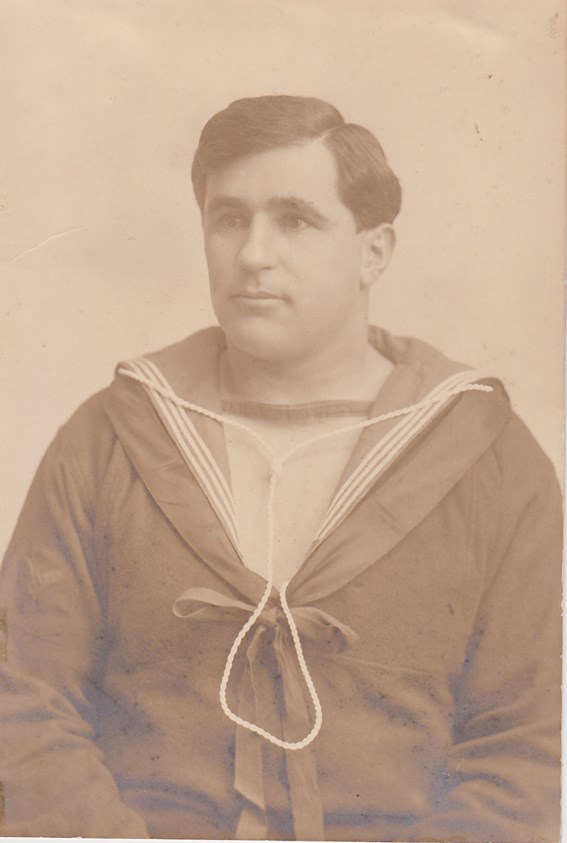Ladner was full of a mixture of emotions in the fall of 1918 as the leaves blazed in their new colours and the temperatures dropped. Hope and anticipation mixed with sadness and resignation.
Hope because the Great War in Europe, the war that should have ended at Christmas 1914, was winding down, the German foe suffering defeat after defeat in the field.
Sadness because five Ladner boys fell in September and October, their names to be engraved on the cenotaph in Memorial Park three years later in the spring of 1921.
John Falk was the son of Gus and Ellen Falk of Westham Island.
Soon after the 1896 birth of twin boys John and George in Gothenburg, Sweden, the Falks immigrated to Canada and found Delta.
The Swedish family fit in easily in the close-knit community of Westham Island, and Jack and George are pictured with the Junior Maple Leaf lacrosse team in 1912.
In May 1915 Jack joined the 121st Western Irish in New Westminster and after a year of training in the Royal City and in Vernon, sailed to England with his lacrosse chum Stan Smith. The boys landed in France in December 1916 to become part of the 102nd Northern British Columbians.
Jack was in hospital with a serious bout of rheumatic fever in April 1917. He missed the epic battle at Vimy, and learned in England of Stan’s death on the ridge.
Jack fought with the 102nd at the Battle of Hill 70, Passchendaele, and through 1918 up to the One Hundred Days, the last major offensive by the Allied forces.
Twenty-two-year-old Lance Corporal Jack Falk fell on Sept. 2 near the town of Arras, instantly killed by a piece of shrapnel from an enemy high-explosive shell, which passed through his head. He lies buried in Dury Mill Cemetery in the Pas-de-Calais.
Ladner-born Guy Taylor was the oldest son of Frederick and Lottie Taylor.
Born in 1894, he stayed out of the war until early 1918, possibly due to his occupation of locomotive fireman. Taylor was conscripted under the MSA Act of 1917 and began training at Willows Park in Victoria in January 1918. He landed in England in April and was sent to France on Aug. 23. He was dispatched to the 7th British Columbia Battalion.
Only a month later, on Sept. 27, 1918, 24-year-old Taylor was killed in action during a massed attack by the Canadians against the Germans on the other side of the Canal du Nord. Taylor lies buried at the cemetery outside Cambrai.
Taylor would have met up with Lester Handford in the 7th Battalion.
Son of Richard and Gertrude Handford, Manitoba-born Lester enlisted in 1915 into the 62nd Battalion in Vancouver before finding a home along with many other Ladner pals in the 131st Westminster Battalion in January 1916.
Sailing in November 1916, Handford was transferred to the 4th Battalion Canadian Railway Troops in February 1917.
The men of the CRT built hundreds of miles of new light railway lines and maintained the heavy railway lines of the French.
In August 1918 Handford transferred to the 7th, a unit that had been in the thick of it since 1915.
On the same day as Taylor, 22-year-old Corporal Lester Handford died in action, killed instantly by an enemy shell exploding near him on Sept. 27 during the attack on the Canal du Nord. He lies very near to Guy Taylor, only a few rows apart, in the cemetery at Cambrai.
Only a year later, Fred Whitworth became one of the few sailors in the infant Canadian Navy to perish on active service.
Ladner-born Whitworth was the son of Isaac and Christie.
Seafarers, not farmers, the Whitworth family ran the ferry than putted back and forth between Ladner and Woodward’s Landing in Richmond. His sister Leonie had enlisted as a nurse in the Canadian Army in 1915 and older brother William had for some reason travelled to England in 1917 to enlist in the British Royal Engineers.
In October 1917, Whitworth enlisted and began his training in Esquimalt in the Royal Canadian Naval Volunteer Reserve. He must have been sharp, as he quickly rose from ordinary seaman to the rank of leading stoker, aboard the HMCS Galiano.
The Galiano was a former Canadian government fisheries patrol vessel.
On Oct. 30, 1918, the Galiano was attempting to get from Cape Scott at the northern tip of Vancouver Island to what is now known as Haida Gwai. In heavy seas, one distress signal was received before the ship vanished, going down with all hands.
Twenty-one-year-old Whitworth was presumed drowned, along with 35 other Canadian sailors. For the next several years, his parents battled with the Canadian government and his insurance company to receive his final pay and other monies owing.
His friend Malcolm Leonard is another name on the Ladner Cenotaph.
From Evie on the Orkney Islands of Scotland, Leonard had settled with his older brother James in Ladner. James built many of Ladner’s fine homes before the war, including the Handford residence in 1912. Malcolm worked with Fred on the small provincial government ferry to Richmond and also rose to the rank of leading stoker in the Royal Canadian Naval Volunteer Reserve.
It is unlikely that Leonard ever learned of his friend’s death off the coast of B.C.
Twenty-nine-year-old Leonard died of influenza at Esquimalt on Oct. 31, 1918, posted to the depot ship HMCS Rainbow. His sickness was part of the first wave of the Spanish Flu that killed thousands in Victoria and Vancouver and millions around the world in 1918/19.
It was only a few days later that the Armistice was declared in Europe. The Great War had ended.
On Nov. 11 each year we now honour the sacrifice of these five men, and 22 others, who died in the War to End All Wars.



